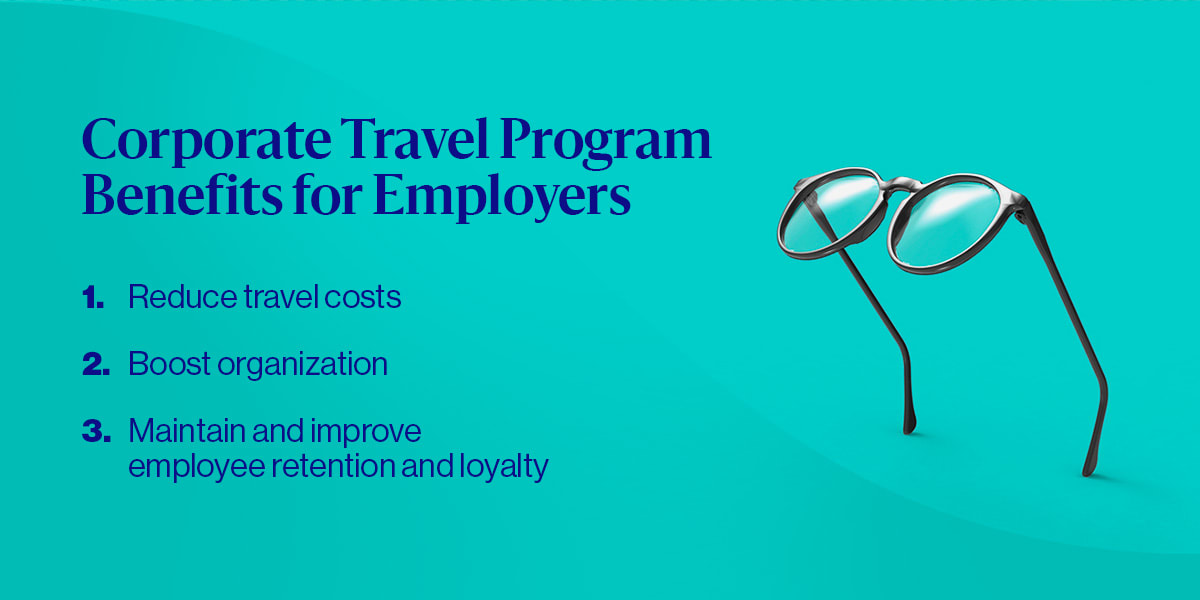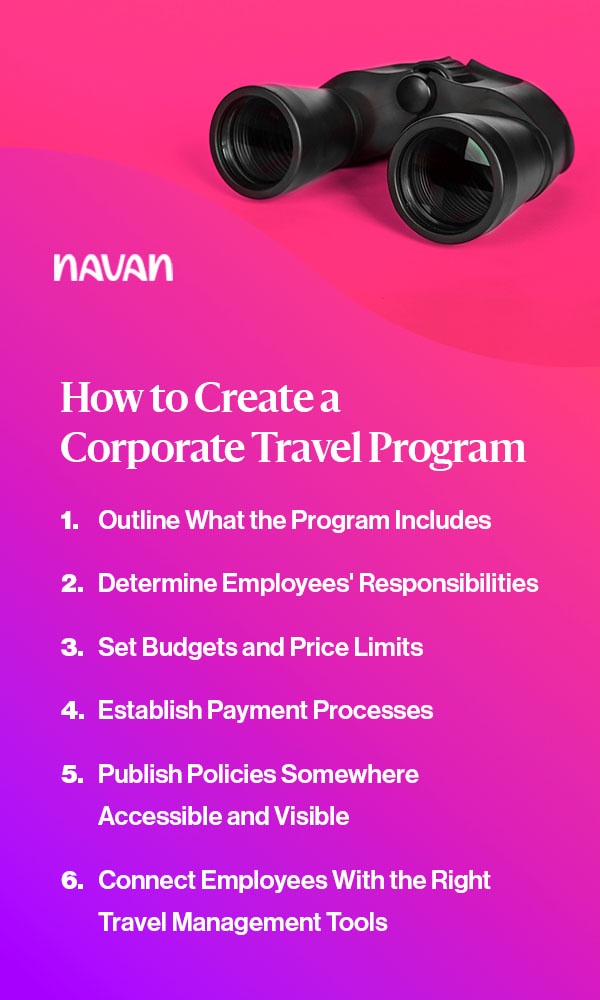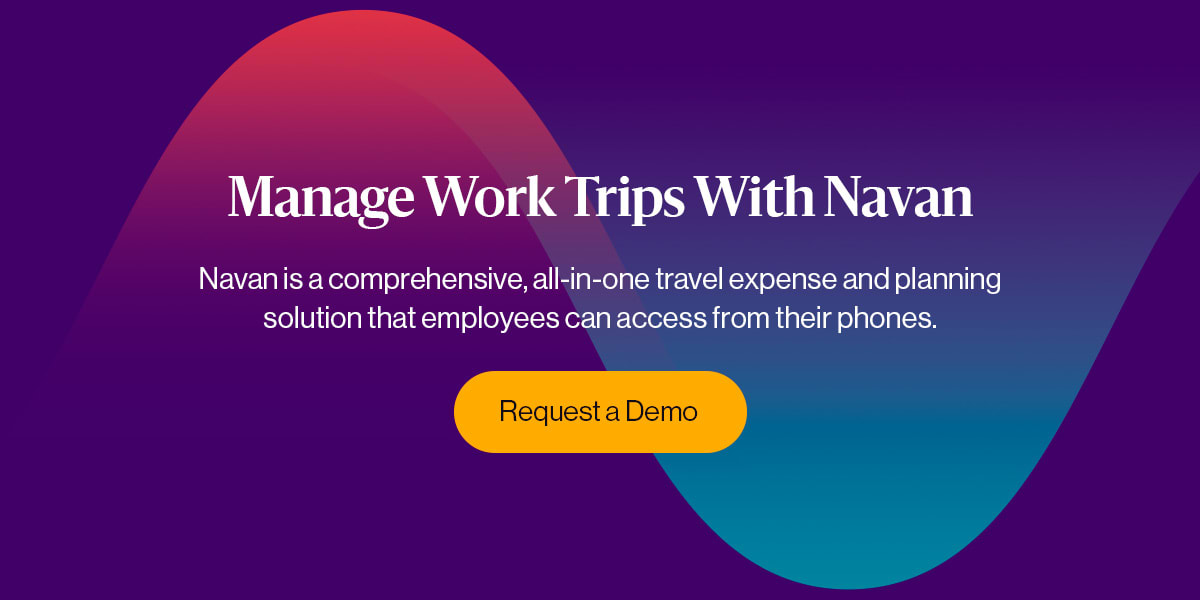How to Create a Travel Program that Meets Both Employer and Employee Needs
The Navan Team

Employees often have to travel to work to meet with clients or colleagues, attend conferences, and secure partnerships on behalf of their company. Business travel is essential, and it can also be very stressful. Employers should aim to help make the travel experience as enjoyable and simple as possible, but balancing employee satisfaction with company needs can be challenging.
Developing a corporate travel program can help companies cater to employee needs while keeping the organization's best interests in mind. These programs give employees the freedom to make decisions about their travel arrangements and preferences while staying within company guidelines. Some businesses might require employees to work with a manager or third-party organization to ensure they adhere to policies and optimize efficiency.
The following guide can help you create a corporate travel program that meets the needs of both the employees and the company.
Corporate Travel Program Benefits for Employees
Developing comprehensive corporate travel programs where employees have more say offers many benefits to the organization. Understanding how corporate travel policies affect your staff can strengthen your relationship with them and encourage decision-makers to implement a formal program.
1. Employees Can Select Their Preferences
Individuals often have travel preferences to increase their comfort and enjoyment. Some corporate travel programs allow very little room for individuals to customize their travel methods, itineraries, or accommodations.
Other programs, however, increase employees’ flexibility and autonomy by letting them book their preferred experiences. Some factors that can change depending on the individual include:
- Accommodation type: Hotels are an excellent option for most business travelers because they're often central and provide a broad spectrum of services. Of course, some travelers prefer specific hotel brands, because they like knowing what they’re going to get and because they may be able to accumulate loyalty rewards.
- Travel methods: When traveling for work, most people imagine flying. But in some instances, trains can get individuals to their locations in the same amount of time and help those travelers who want to avoid long security lines or seek sustainable alternatives.
- Ground transportation: Once at their destination, some travelers rent a car to get around, while others prefer to rely on cabs and rideshare services.
- Flight class: Some travel programs give their employees a budget and allow them to plan around a specific amount. They might choose to downgrade their flight seats in order to have more funds available for lodging, meals, or transit once at their location. Others love the luxury of flying first or business class because of its perks and added comfort.
- Location: Along with choosing their accommodations, individuals also have different standards for their hotel’s location. Some travelers like to stay in city centers, where they can easily access conference centers, resources, and local attractions. Others might prefer more residential areas for the quiet, relaxed feel. Alternatively, others like to stay near the airport or train station to quickly prepare for their return.
Summary
By offering more preferences and leaving choices up to the individual employee, companies can help streamline the travel planning processes while ensuring the trip meets each traveler’s standards.
2. Improve Job Satisfaction
Since the COVID-19 pandemic, around half of American employees say their expectations of employers have changed. They’re looking for more support, resources, and perks from their employers to stay loyal to the company. Companies can meet these new expectations by evaluating and updating their benefits and programs — this includes business travel and leisure extensions, which can be positioned as a company perk.
Giving employees more control over their travel experiences can improve their time spent traveling and increase their job satisfaction. It’s an important consideration since travel can cause increased stress and anxiety; it can also reduce sleep and disrupt routines and lifestyle standards. For example, individuals might get stressed when waiting in security lines, making tight flight connections, or taking “red-eye” flights with a late departure and early morning arrival.
By allowing employees to choose elements of their trip and supporting their needs, companies show employees they care about their well-being and enjoyment. Travelers might feel more ready to return to their regular duties because they could rest and relax during downtime on the trip.
The right programs and benefits can help ensure that employees are happy with their position, responsibilities, and employer, reducing their interest in looking for a new job.
3. Increase Trip Enjoyment
When individuals have more control over their travel, the experience becomes more enjoyable. Employees who have positive memories of their work trips are more likely to embrace future business travel with enthusiasm or even volunteer for more travel opportunities. These individuals can become advocates for your work-travel program by talking about what they loved and accomplished with their co-workers.

Corporate Travel Program Benefits for Employers
Creating a positive experience for travelers can help keep employees happy, but it can also benefit companies.
1. Reduce Travel Costs
When individuals arrange their travel within the guardrails of a managed travel program, they can access exclusive rates that companies or the travel management partner books. For example, Navan has negotiated savings of up to 15% off the best available rates at thousands of hotels globally.
Some travel management software even incentivizes traveling employees to make price-conscious decisions. For example, the Navan Rewards program enables employees to earn rewards when they book business hotels below a “price to beat.” The company saves money, and the traveler gets a kickback to use toward Amazon gift cards or personal travel. The program encourages employees to make cost-conscious choices while saving the company money.
2. Boost Organization
A quality travel program can improve organization for your company. When individuals travel for work, they have to track expenses, use specific booking websites and tools, and stay within a budget.
Because there are so many moving pieces when it comes to travel, some companies have entire departments or teams that handle planning and organizing travel. A travel program can set clear guidelines for business travel, which helps employees understand the rules and reduces the impact on administrators and managers. When employees have the freedom to book their own travel — on the company’s platform and within company guidelines — it saves time and increases organization for managers. Approval, booking, and reimbursement processes will free up time that managers would otherwise spend explaining rules to employees; they also reduce employees' frustration over expenses and reimbursements.
3. Maintain and Improve Employee Retention and Loyalty
Because having more flexibility and control with work trips can improve the employee experience, employees are more likely to stay with your organization. They may even become better advocates for your company, sharing good experiences with their friends and family.
With this increase in employee retention, your company can save time and money on onboarding and training — and invest more in existing employees.

How to Create a Corporate Travel Program
To improve the employee travel experience and reap the benefits of a corporate travel program, companies must develop policies and programs to support the program’s goals and initiatives. These policies, resources, and services should provide employees with the information they need while outlining what your company is responsible for.
1. Outline What the Program Includes
Travel programs should be comprehensive and cover many types of travel-related expenses for employees. However, you can reduce the chance of incurring charges for out-of-policy items or experiencing program abuse by establishing what your program covers.
Some common expenses covered by travel programs include:
- Flights
- Accommodations and lodging
- Ground transportation and car rentals
- Baggage
- Meals
- Events or entertaining clients
When employees understand what they can charge to the company, they can better optimize their resources and avoid breaching policies. You should also be explicit about what the company won't cover. For example, tourist activities or souvenirs are often not included in travel expenses because they’re for personal enjoyment.
2. Determine Employees' Responsibilities
It’s also important to outline how employees should go about the approval, expense, and reimbursement processes.
- Approval: Even though employees are free to choose elements of their work trips, many companies require individuals to submit plans for approval to their supervisors or travel managers.
- Expense: The processes for expense approval that employees and managers need to follow should also be outlined, along with clarification on acceptable systems of payment for any expenses incurred during travel (i.e., personal or business credit cards only, or a combination).
- Reimbursement: Employees should understand timelines and submission processes in order to follow procedures correctly and promote increased efficiency. They should also understand what constitutes permissible expenses and any restrictions.
Clarifying these processes sets expectations and parameters for employees and gives the company recourse in the event of any violations.
3. Set Budgets and Price Limits
Whether you have administrators arrange trips on behalf of employees or let employees plan travel themselves, you must set price restrictions and ranges. You can establish your budgets in various ways, depending on the freedom you want to provide your employees while they travel.
You can break expenses into categories with price limits or parameters to accommodate different tastes and experiences, like lodging, food, travel, etc. Alternatively, you can provide a
Fixed policy caps can present challenges for companies. During high travel seasons, employees may find that available rates are above policy guidelines. And when the opposite is true, travelers may book the most expensive hotel room available — so long as it is within policy. Implementing dynamic expense policies and offering incentives for booking below market prices are two modern solutions that help companies save money while keeping employees happy.
4. Establish Payment Processes
Regardless of how much freedom you give employees during the planning process, they will need to make purchases themselves on behalf of the company. Whether they’re booking their travel and hotel or charging meals during the trip, these costs will come out of their trip's budget. Because they must make payments, you should outline how these procedures will work as well as your expectations for employees before, during, and after their trip.
Some factors you should explain to employees include:
- Payment methods: Companies use various methods to complete trip payments depending on their needs and resources. Many provide their employees with company credit cards, allowing them to charge reservations and meals as needed. Alternatively, companies might lack the resources to provide each employee with a company card, instead asking them to use personal cards. In these situations, the company will reimburse employees for all business expenses throughout the trip.
- Points and reward programs: In addition to outlining payment methods and procedures, you should be clear about your company's policy on travel rewards programs. Many employees see traveling for work as an opportunity to earn personal points and miles. If your company’s method of booking does not allow individuals to link their frequent flyer and hotel rewards accounts when booking on company cards, chances are high that they will book elsewhere so they can reap the benefits.
- Saving receipts: Regardless of payment methods, accounting teams require proof of purchases made during trips. Receipts allow them to match online statements to the company card's expenses, ensuring that employees use their privileges responsibly. For policies that require individuals to use personal cards, receipts allow companies to reimburse them fully for costs. Your policy should outline why employees must save receipts and how to submit them for review upon returning to the office.
Summary
Providing your employees with as much information as possible can increase understanding and reduce questions for individuals taking trips. The right resources can improve work trips, increase job satisfaction, and decrease stress.
5. Publish Policies Somewhere Accessible and Visible
Your travel program policies should be comprehensive, detailing many circumstances and variables. Making these resources accessible to employees preparing for a trip can help ensure they comply throughout their planning and time away from the office. People may forget original instructions, so online resources can help individuals find the clarification they need without disturbing managers and supervisors.
You can increase accessibility and visibility by using a cloud documentation service to host your policies. Individuals can view documents and information from any device, streamlining work if they are planning from home or need a refresher while away on their trip.
6. Connect Employees With the Right Management Tools
Managing a corporate travel program requires sharing the right tools and resources with your employees. A corporate travel and expense management solution can provide the visibility and assurance employees and employers need when planning work trips.
These solutions can simplify flight bookings, optimize savings, and track spending. Your investments in tools can streamline and improve employee experiences, making travel more enjoyable for managers and individuals.
Manage Work Trips With Navan
Navan is a comprehensive, all-in-one travel expense and planning solution that employees can access on-the-go from their phones. It allows individuals to manage their company card, bookings and travel arrangements, and expenses in one location for increased organization and visibility.
Navan also incentivizes traveling employees to make price-conscious decisions through its innovative travel rewards program. When employees choose hotels below the fair market price, they receive rewards in the form of personal travel credits or Amazon gift cards. The company saves money, and the traveler gets an incentive — it’s a win-win!
In addition, the app tracks data and reports information in real time, so employers can better understand how employees are utilizing their benefits and saving your organization money by using Navan. The platform can scale to match your operations for seamless implementation and integration. You can easily adjust spending limits and policies to accommodate different needs and budgets.
Request a demo today and discover how Navan can support and improve your company's travel policy and management.
This content is for informational purposes only. It doesn't necessarily reflect the views of Navan and should not be construed as legal, tax, benefits, financial, accounting, or other advice. If you need specific advice for your business, please consult with an expert, as rules and regulations change regularly.
More content you might like
Take Travel and Expense Further with Navan
Move faster, stay compliant, and save smarter.
